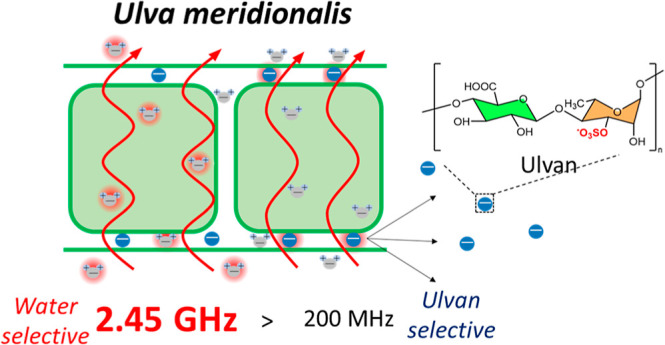- Record: found
- Abstract: found
- Article: found
Accelerating Sulfated Polysaccharides Extraction from Fast-Growing Ulva Green Seaweed by Frequency-Controlled Microwaves

Read this article at
Abstract

Ulva sp. is a type of green algae and is widely distributed in coastal areas around the world due to eutrophication. Effective utilization of Ulva sp. is expected for the establishment of carbon-neutral biochemical production. Microwave-assisted hydrothermal extraction is one of the most efficient ways of extracting highly functional polysaccharides called ulvan. Here, we demonstrate the importance of microwave frequency in enhancing ulvan extraction from Ulva meridionalis. We found that microwaves (2.45 GHz) selectively heat water solvent, while radio frequency (200 MHz) selectively heats ionic ulvan. Moreover, 2.45 GHz was more effective for extracting ulvan than 200 MHz. Then, we analyzed the conformational change in ulvan during microwave irradiation using in situ small-angle X-ray scattering. Microwaves initiated the loosening of ulvan bundles at temperatures lower than those of conventional heating. As a result, microwaves at 2.45 GHz selectively heat water and initiate ulvan structural change to enhance the extraction of ulvan from U. meridionalis.
Related collections
Most cited references45
- Record: found
- Abstract: not found
- Article: not found
Seagrass ecosystems as a globally significant carbon stock
- Record: found
- Abstract: found
- Article: not found
Essential oils: from extraction to encapsulation.
- Record: found
- Abstract: found
- Article: not found